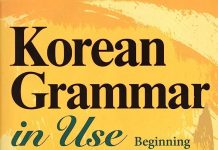1981년 3월 5일에 태어났어요.
(The baby) was born on March 5, 1981.
2004년 2월에 대학교를 졸업했어요.
I graduated from college in February 2004.
작년에 결혼했어요.
We got married last year.
The past tense form of adjectives and verbs is formed by adding -았/었 to their word stems.
– When the word stem ends in the vowel ㅏ or ㅗ, 았어요 is added.
– When it ends in any other vowel, -었어요 is added.
– For verbs and adjectives ending in 하다, -였어요 is added to form 히 + 였어요, which is then shortened to 했어요. In the case of the formal polite style, -았/었습니다 and 했습니다 are used.
– 이다: To be
– 아니다: Be not
Note:
The past tense of 주다 can be written either as 주었어요 or 웠어요, and the past tense of 보다 can be written either as 보았어요 or 봤어요, the past tense of 오다 is written only as 왔어요, not 오았어요.
• 주다 + -었어요 ᅳ>주었어요 (〇) 줬어요 (〇)
• 보다 + -았어요 一> 보았어요 (〇) 봤어요 (〇)
• 오다 + -았어요 一> 왔어요 (〇) 오았어요 (X)
Conversation:
A: 토요일에 영화를 봤어요? Did you see a movie on Saturday?
B: 네, 봤어요. 재미있었어요. Yes, I saw a movie. It was interesting.
A: 주말에 뭐 했어요? What did you do over the weekend?
B: 음악을 들었어요. I listened to music.
>> Full of ‘Korean grammar in use – Beginner’: Click here
>> Fanpage: Say Hi Korean


![[Korean grammar] ‘ㅅ’ 불규칙 (Irregular Conjugation)](https://sayhikorean.com/wp-content/uploads/2021/10/112.1.jpg)
![[Korean grammar] ‘ㅎ’ 불규칙 (Irregular Conjugation)](https://sayhikorean.com/wp-content/uploads/2021/10/111.1.jpg)
![[Korean grammar] ‘르’ 불규칙 (Irregular Conjugation)](https://sayhikorean.com/wp-content/uploads/2021/10/110.1.jpg)
![[Korean grammar] ‘ㄷ’ 불규칙 (Irregular Conjugation)](https://sayhikorean.com/wp-content/uploads/2021/10/109.1.jpg)
![[Korean grammar] ‘ㅂ’ 불규칙 (Irregular Conjugation)](https://sayhikorean.com/wp-content/uploads/2021/10/108.1.jpg)
![[Korean grammar] ‘ㄹ’ 불규칙 (Irregular Conjugation)](https://sayhikorean.com/wp-content/uploads/2021/10/107.1.jpg)
![[Korean grammar] ‘ㅡ’ 불규칙 (Irregular Conjugation)](https://sayhikorean.com/wp-content/uploads/2021/10/106.1.jpg)
![[Korean grammar] Indirect Quotation Contracted Forms: -대요, -래요, -재요, -냬요](https://sayhikorean.com/wp-content/uploads/2021/10/105.1.jpg)
![[Korean grammar] Indirect Quotations](https://sayhikorean.com/wp-content/uploads/2021/10/104.1.jpg)
![[Korean grammar] Direct Quotations: ‘Quoted speech’ + 하고/라고 + V](https://sayhikorean.com/wp-content/uploads/2021/10/103.1.jpg)
![[Korean grammar] A/V-(으)ㄴ/는데요 Additional Endings](https://sayhikorean.com/wp-content/uploads/2021/10/102.1.jpg)